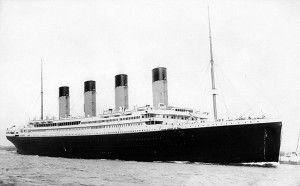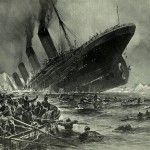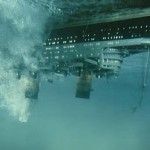Why do I expect to be taken seriously by being given the benefit of the doubt? It is because I care. Only human beings know about truth because only humans can trust each other about facts. It is because of the invention-out-of-nothing, made at a very young age, of the suspicion of benevolence being extended towards them. This invention turns them into a person because only a person can understand benevolence.
So the refusal by CERN to offer a counterproof to the presented proof that they are playing with fire (a big fire) violates my rights as a person. The benefit of the doubt is a human right to solicit – especially so in science which rests on nothing else.
My friend Tom Kerwick has a result whose proof contains a loophole if I am not mistaken, but it takes time to come to the point with him. He therefore believes the danger were not there and innocently censors my best blogs. Maybe he will talk to me after this one.
But the real question is: What is benevolence? How come a planet can become dependent on the essence of benevolence being understood? Is it not well understood by the human society? Amazingly, this is not the case.
I have an “animal model” or an artificial-intelligence model if you prefer. It presupposes that you believe in the brain equation, or more generally that human beings and other vertebrates etc. are autonomous optimizers governed by an optimality functional shaped by evolution. (The underlying mathematical problem happens to be well-defined; it is a variant to the famous traveling salesman problem.)
If so, human beings are “just” autonomous optimizers? All animals are. But what, then, is special about humans? Answer: their being persons. Are they persons from birth? No – only person-competent from birth. When do they become persons? At the moment they first invent the suspicion of benevolence. For benevolence is a person-property. How does the suspicion arise? Through a creative misunderstanding (which then turns out to be none): By their being rewarded by an adult’s displayed happiness about their own being happy at this moment.
But: Is this not exactly the same with a young wolf who is rewarded by the tail-wagging of a feeding adult who is rewarded by the youngster’s tail-wagging?
The answer is in the negative (independently of the still unknown answer to the question of whether a puppet can already be rewarded by an adult’s tail-wagging). But is not the tail-wagging an expression both of affection and of happiness – just as this holds true for the smile-laughter in the human species? This is correct. Then: why do not dogs insist on truthfulness, too?
What wolves lack compared to humans is mirror-competence. On the other hand, all of the other mirror-competent animals known (elephants, apes, dolphins, magpies) are non-rewardable by the displayed joy of the compagnon. This trait, common to wolves and humans as we saw, is a maximally rare consequence of random evolutionary “ritualization” in the sense of Huxley’s.
But: We could substitute for that particular lacking trait artificially in the individual interaction with a young bonding animal taken from one of the just-named species. A sperm whale has the largest and most complex brain on earth and thus is hardware-wise the most intelligent creature in the universe at the present state of human knowledge. Leo Szilard still thought this was the dolphin (in his fictional story “The day of the dolphins” written shortly after the catastrophe of the dropped bombs which he had made possible and then tried in vain to hold back).
The trick with the dolphins or any other of the named species: to consistently combine our own bonding signal of smile-laughter, in the interaction with the genuinely loved foster child from the other species, with the natural bonding expression of that species. Then the same “misunderstanding” of benevolence being suddenly suspected will again arise just as it does in the human playroom.
But this would mean that these animals are just as person-competent as human babies? This is correct. Understanding the love radiated by the dream-of-life giving instance (in sync with Mom‘s smile) is not a human prerogative it appears. A higher personal intelligence than ours is artificially achievable – without being man-made and without any artificial hardware required, decades before Ray Kurzweil’s proven “singularity” but in the same loving spirit.
Now maybe you hate me for being that optimistic – unless you have an autistic child who suddenly can be causally rescued from his smile-blindness (which is easy to substitute for as we saw – acoustically in our case). But I am here in the pledging position, not the giving position as I mentioned at the beginning: by my insisting on my own person right of not being denied the answer to a maximally serious question posed to the scientific community: Why is my danger-proving result not cogent – is anyone able to come up with a counter-proof?
We can leave A.I. at this point (there is a whole book on him titled “Neosentience”) since an even more life-saving issue is in the background in which I need your help: My begging the scientific community for the benefit of the doubt towards my Telemach result (a second charming youth beside Spielberg’s A.I.): Telemach says that black holes have radically different properties than are innocuously presupposed by the makers of the CERN experiment.
Why can I be so sure that I am right? It is because no one could offer a counterargument up until now. Except for saying that some accepted pieces of knowledge are then no longer valid as I had shown – which they do not believe but cannot defend against my given proof.
Okay: if I am sure so far – what does this mean? I am clamoring for the benefit of the doubt by not counteracting to my results until they have been disproved. Like the famous chimpanzee mother in the documentary who desperately waves with her arms to prevent the human aggressor from shooting – in vain. For continuing the LHC experiment in Switzerland is maximally risky if I am right. But who am I to request the human right to be falsified before being overrun?
Is this not maximally absurd: a single person requesting humankind to listen to him? It would be absurd if I had not “bent over backwards” in the words of Richard Feynman to make it maximally easy to show that I am wrong – if I am wrong. And decisively it is not absurd because of the unfathomably large consequences if my result is counteracted when true.
So I am a terrorist holding a threat in my hands? It is the other way round: The planet is holding a “device” in its hands and is denying me the right to warn it in time that the toy machine is loaded. But my friend Tom Kerwick has a counterargument to offer as he says? I am all ears and eyes to be presented with it in a way I understand – so far, I admit, I have been too stupid to see its cogency.
I am ready to cancel all my warnings with my most humble apologies if he is right. Which should be easy to find out since his argument only has to do with large numbers of particles generated and with hypothetical diameters of quarks and miniature black holes. I publicly apologize for having used up so much space on Lifeboat so far if he succeeds in making me understand his point and the latter survives to the best of my understanding. Please, dear Tom: do not erase this one. I am all on your side, only a bit slow – okay?





